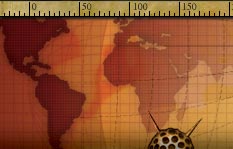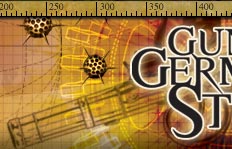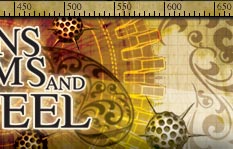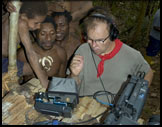 |
 |
 |
 |
||||||||||||||||||||||||||||||||
Behind the Scenes
While development began on the project in early 2003, final production only kicked off in January 2004 – with a core British team of just six people, led by series producer Cassian Harrison, director Tim Lambert and Lion Television executive producer Richard Bradley. They had the unenviable task of transforming Jared Diamond's encyclopedic analysis of world events into three hours of compelling drama-documentary. It was no mean feat, as Associate Producer Sue Horth recalls: "Our first task was to figure out which elements of Jared's book would form the core of our television narrative. Jared spent nearly thirty years researching his colossal thesis, and we knew we'd have to be pretty brutal in choosing which stories our three hours should focus on. Should we follow his lead, and begin with the clash at Cajamarca? Should we go all the way back to the earliest days of human evolution? Should we focus on the story of Europe, at the expense of other parts of the globe? We wrestled with these questions and many more, until we came up with a structure that we believed was true to the central ideas of the book. And, naturally, Jared had a lot of input, guiding our vision and proffering advice on which elements we should lose! Once we'd hit on our narrative structure – beginning with the birth of farming, exploring the evolution of civilizations in the Near East, unravelling the reasons for European success in the New World, and addressing the question of guns, germs and steel all around us today – we then had to narrow down our filming itinerary.
We knew from the start that Peru and Papua New Guinea were a must. As in Jared's book, they would form the touchstones of our story. We were also determined to use the third episode to test Jared's theories in the real world, and we all felt that Africa was probably the best place to do this. But where in Africa? Where else would we base our drama and our documentary? And, with real limitations on both time and money, how on earth would we fit them all in? Our choices were starting to feel like a very long way from west London. We chose Jordan as the location for our Neolithic story in episode one, since it offered the best combination of live archaeology and Neolithic-style locations for our drama reconstruction. This would be partnered with Jared's field experiences in Papua New Guinea, anchoring the story very much in Jared's own work. The second episode would be filmed primarily in Peru – and our series director, Tim Lambert, embraced the task of trying to recreate the defeat of 80,000 warriors in the hilltops of the Andes! We would anchor Jared's contribution for this episode to rural Spain, allowing him to trace the story of Spanish success – of guns, germs and steel – from the heartland of the conquistadors themselves. The third episode was a little more complicated. We knew we wanted to test both Jared and his ideas, by taking him to a part of the world where he might see modern inequalities in action. Africa seemed the obvious choice, but it's a huge continent. But when we realized we could take Jared on a journey, starting in the southern temperate zone, where Europeans were most successful, and ending in the heart of tropics, where he'd see the consequences of European failure all around him, we knew we'd have the ingredients for a very compelling final film. South Africa became the episode's filming base, and although we wanted to take Jared to the Democratic Republic of the Congo – the true heart of the tropics – our insurers insisted on a safer location! So we took him to Northern Zambia instead.
Between us, we've picked up smatterings of Arabic, Pidgin, Zulu, Qquechua and Afrikaans; have learned how to apply prosthetics; can bark 'action' in many languages; know what to do when followed by an angry elephant (run very fast); recognize 25 varieties of tropical bird and have sampled some truly peculiar culinary delights. It's been a delightful and extraordinary journey, and I'm immensely proud to recall the memories and wonderful friends we all made, in the making of Guns, Germs and Steel."
Where to next? Find out more about Jared Diamond. |
||||||||||||||||||||||||||||||||
 |
|
|
- The Show – Overview - Episode One: Out of Eden - Episode One: Transcript - Episode Two: Conquest - Episode Two: Transcript - Episode Three: Tropics - Episode Three: Transcript - Behind the Scenes - Credits - Pledge Now - Feedback - Tune In |
|



